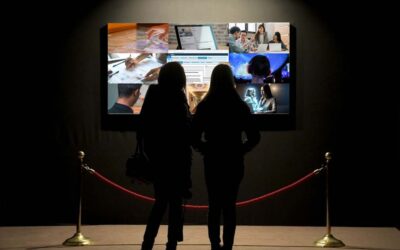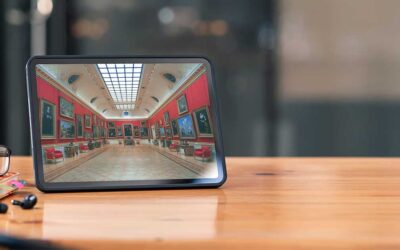The Internal Uses and Benefits for a Mobile Museum CMS

Rachael Cristine Woody
When I was traditionally employed, I used a laptop and then an iPad for work while I was in the stacks or out in the field. For many collection workers, our workstation is rarely next to the collections we work with.
As a result, we’ve had to employ the use of handwritten notes or repetitive moving and opening of boxes for what would otherwise be a quick action to check information, complete a reference request, or update the catalog. This not only elongates tasks that eat through our day, it allows for a greater range of human error from our walk between the collections to the computer to access the museum Collections Management System (CMS). Last week we covered the external use cases and benefits for a museum CMS to be optimized for mobile use. This post will focus on the internal use cases and benefits of a mobile-optimized CMS.
The World is Increasingly Mobile
According to statistics cited in a previous post The Future is Here: Why Your Museum CMS Must be Mobile, we see that mobile device usage to access and “do business” on the internet will continue to increase. And the onset of a global pandemic has revealed it’s not just the museum digital visitors who want (or need) to access content from the museum CMS remotely and on a mobile device. Many museum staff have been forced into an unplanned work-from-home situation where access to computers and the internet are problematic; especially for those who have partners and school children who are also trying to work and learn from home. This situation further increases the necessity to have all work platforms—including the CMS—fully functional on mobile devices.
Internal Uses for a Mobile Museum CMS
A mobile museum CMS supports backend collection management that’s performed in the stacks, conservation lab, classroom, at conferences, or in the field. Not to mention that for the duration of the pandemic many museums have had to close or restrict hours which has further increased everyone’s reliance on being able to access the museum CMS remotely. While this doesn’t necessarily mean everyone is using mobile-only to do so, the statistics on mobile devices show that mobile makes up a not insignificant chunk.
The Situations Where a Mobile Museum CMS Helps
- Updating content while in the stacks, conservation lab, classroom, or in the field
- Travelling offsite
- Presenting at meetings and conferences
- Working remotely
For more on remote work for museum staff please see my previous posts on Lucidea’s Think Clearly blog The Tools Needed to Support Remote Museum Staff, Prioritize These Remote Museum Projects During Coronavirus—Part 1, and Prioritize These Remote Museum Projects During Coronavirus—Part 2.
Internal Benefits from a Mobile Museum CMS
At-a-glance, these are the benefits of a mobile museum CMS for museum staff:
- Changes can be made “on the fly” and keeps content up to date while decreasing the opportunity for human error.
- Demonstrations, show and tell, and presentations are capable from any device.
- Grants emergency access from anywhere there’s internet.
- Eases forced or last-minute remote work situations.
Conclusion
If your museum CMS isn’t available for mobile, or is severely limited in functionality and display as a mobile display—it’s time to move onto a different museum CMS. From the statistics of how humans are increasingly relying on mobile-only internet access to the reality of the pandemic-induced work from home situations, it’s not far-fetched to think our world may soon be a mobile-first or mobile-primary world.
For more on how to maximize the value of your CMS, please get your free e-copy of my book: How to Select, Buy, and Use a Museum CMS, courtesy of Lucidea.

Rachael Cristine Woody
Expert Rachael Cristine Woody advises on museum strategies, collections management, and grant writing for a wide variety of clients. Register here for the next webinar in Rachael’s series on Collections Management System Essentials for Impact on 10/21/20, where she’ll expand on topics related to a mobile-enabled CMS. And learn about Lucidea’s Argus solution for museum collections management.
Similar Posts
From Preservation to Resilience: An Introduction to Building Resilient Digital Collections
Preserving a digital collection is a job that is never done. But what if we shifted our focus from preservation to building digital resilience?
Client Spotlight: MacLaren Art Centre Goes Beyond Collections Care to Access and Growth
“As our needs evolved, it became clear that our existing CMS was no longer working for us. Not only do we need to perform basic collections care, we need a system that will support public access, enable growth, and match our innovative strategies.”
Museum Collections Online: Digital Storytelling Blog Series Roundup
An overview of 10 blog post series that highlight how museums can leverage online collections and digital storytelling platforms, strategies, tools, and best practices.
How Museums Can Broaden Access and Improve Accessibility with Digital Storytelling
Museum expert Rachael Cristine Woody explains how digital storytelling expands access and improves accessibility of museum collections with inclusive multimedia formats.




Leave a Comment
Comments are reviewed and must adhere to our comments policy.
0 Comments